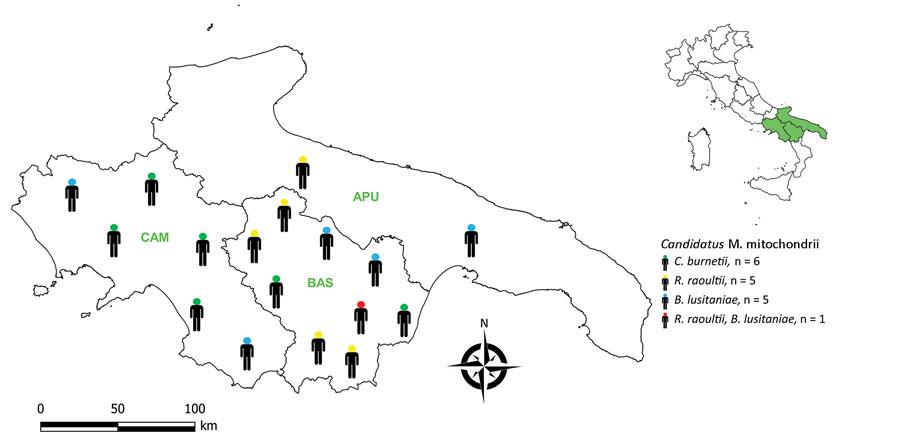Volume 28, Number 9—September 2022
Research
Detection of Endosymbiont Candidatus Midichloria mitochondrii and Tickborne Pathogens in Humans Exposed to Tick Bites, Italy
Figure 1

Figure 1. Distribution of 17 persons in whom Candidatus Midichloria mitochondrii and tickborne pathogens were detected, Italy, 2021. Inset shows region of interest in southern Italy (green shading). APU, Apulia; BAS, Basilicata; B. lusitaniae, Borrelia lusitaniae; CAM, Campania; C. burnetii, Coxiella burnetii; R. raoultii, Rickettsia raoultii.
1These authors contributed equally to this article.
Page created: July 27, 2022
Page updated: August 19, 2022
Page reviewed: August 19, 2022
The conclusions, findings, and opinions expressed by authors contributing to this journal do not necessarily reflect the official position of the U.S. Department of Health and Human Services, the Public Health Service, the Centers for Disease Control and Prevention, or the authors' affiliated institutions. Use of trade names is for identification only and does not imply endorsement by any of the groups named above.